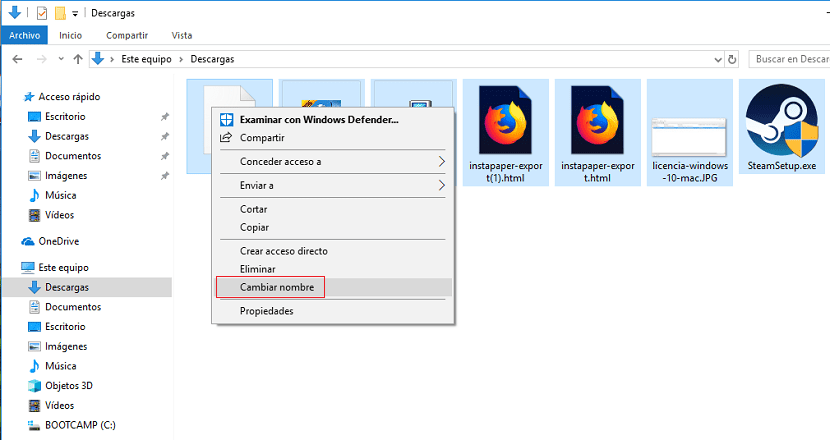
Every time a document is created, we will most likely enter the name with which we will be able to easily recognize the document that we have created, be it a text document, a spreadsheet, a presentation ... When we start to download the images from our smartphone or camera, we also need to order them.
The best way to computer photos, videos or any other type of file is rename them, either individually or together, ideal for when dealing with a large number of files. As Windows has evolved, Microsoft has been adding / removing methods to rename our files.
How to rename a file

When it comes to renaming a file, Windows offers us two different methods.
- Pressing once about file name, so that the name field is displayed in blue. At that time we must enter the new name of the file.
- If we don't want to click once on the file, we can select the file in question and press the F2 key. At that time, the name field will be shown in blue, it will be then when we must enter the new name.
- Another option that Windows makes available to us, allows us to change the name by placing us on the file in question and clicking on it Right mouse button. In the contextual menu that appears, we select rename.
How to rename multiple files together

To rename multiple files together, the quickest and most effective method is as follows.
- First we must select all the files that we want to rename.
- Next, we do not place on top of one of them and click with the right mouse button, subsequently selecting Change name.
- We introduce the name that we want the file to have and press Enter. Windows will automatically take care of numbering all files, since as we all know, in the same directory there cannot be two files with the same name and extension.